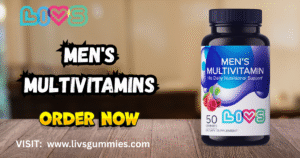If you raise money online, the donation button matters. It’s a small feature, but it’s where donations start. Whether you run a nonprofit or personal fundraiser, the button is how people give. So it needs to work. It needs to be easy. And it needs to look right.
This guide covers what a donation button does, where to place it, how to design it, and what to avoid.
What Is a Donation Button
A donation button is a clickable element on a website, email, or social post. It takes people to a page where they can give money.
You might see it labeled “Donate,” “Support Us,” or “Give Now.” Sometimes it’s part of a form. Sometimes it links to an external page. Either way, it has one job—help someone give.
Why the Donation Button Matters
People won’t give if the process is hard. A donation button makes giving easy. It gives people a clear next step.
Without it, people might get confused. They might leave your site. Or they might not know where their money goes. But with a clear button, you build trust.
If someone feels moved to give, you don’t want to slow them down. You want to help them act right away.
Where to Place the Donation Button
Placement affects clicks. So think about where people expect to see it.
Website Header
Most nonprofits place a button in the top right corner. It stays visible on every page. That makes it easy to find.
Donation Pages
If you write about your cause, end with a button. Don’t make people scroll back up. Add one near the end of your story.
Blog Posts
If a post talks about your work, add a button at the top or after the first few lines. You can also add one again at the end.
Pop-Ups
Some sites use a small pop-up that appears after a few seconds. If you do this, make sure it’s easy to close.
Emails
In email newsletters, place the button high up. Use it again near the end. Make sure it works on mobile too.
Social Media
You can add buttons to Facebook pages or Instagram bios. Or link directly to your donation page with a short message.
What Makes a Good Donation Button
It’s Clear
Say what you want the reader to do. Use words like “Donate Now” or “Give Today.” Don’t use vague terms like “Support” unless you explain it nearby.
It Stands Out
Use a color that contrasts with your background. If your site is mostly white and gray, a red or green button can draw attention.
It’s Big Enough to Tap
Make sure people on phones can tap it easily. Avoid tiny text or narrow buttons.
It Loads Fast
The button should respond right away. If it delays or doesn’t work, people may give up.
It Goes to the Right Place
Check your links often. A broken button means lost donations.
Words That Work
Here are examples of simple, clear button labels:
- Donate
- Give Now
- Help Today
- Contribute
- Support the Cause
- Make a Gift
Use the label that fits your tone. For serious causes, “Donate Now” works well. For friendly campaigns, “Chip In” or “Help Today” may feel better.
Keep it short. One or two words is enough.
Design Tips
You don’t need fancy design. You just need clarity. Stick to these basics:
Use Bold Fonts
Make the text readable. Don’t use decorative fonts. Sans-serif fonts like Arial or Roboto are safe picks.
Use Strong Contrast
If your text is white, use a dark background. If your text is black, use a light one. Avoid low-contrast colors like yellow on white.
Leave Space Around It
Don’t crowd your button. Leave room so it stands out.
Test Mobile View
Look at your site on a phone. Make sure the button looks good and works with one tap.
Mistakes to Avoid
Hiding the Button
Don’t bury it in the footer or make it the same color as your background.
Using Confusing Text
Avoid labels like “Submit” or “Click Here.” People won’t know what they’re clicking.
Opening a New Tab Without Warning
If your button opens a new page, let people know. Sudden page jumps confuse users.
Adding Too Many Buttons
One button per screen is enough. If you repeat it, space it out.
Not Testing It
Click your own button often. Test it on desktop and mobile. Make sure it goes where it should.
Donation Button vs Donation Form
Some people mix these up. A donation button is what you click. A donation form is what comes after.
The form collects donor info and processes the payment. The button sends people to the form.
If your button links to a long or confusing form, people might leave. Keep forms short. Ask only what you need. Most forms ask for:
- Name
- Donation amount
- Payment method
Some also ask if the donor wants a receipt or wants to subscribe to updates.
The shorter the form, the better. You can always follow up later.
How to Add a Donation Button
If you use a website builder like WordPress, Wix, or Squarespace, adding a button is easy. Most platforms have a button block.
Just choose the button style, write your label, and add the link to your donation page.
If you use a fundraising platform like WhyDonate, they give you code to embed a button. You copy that code and paste it into your site.
Some tools also let you customize colors and fonts to match your brand.
Tracking Donations from Your Button
Use tracking tools to see if your button works. Google Analytics lets you track clicks. Some platforms also show which pages get the most donations.
This helps you test. Try changing button colors or text to see what gets more clicks. Just test one change at a time so you know what made the difference.
Mobile Optimization
Most people visit sites on their phones. Your button has to work well on small screens.
Here’s how:
- Make sure the button is wide enough to tap with one thumb.
- Don’t place it too close to other links.
- Check load speed on mobile data.
- Make sure the donation form that follows works well on mobile too.
A slow or broken mobile experience will cost you donations.
Using Multiple Buttons on One Page
It’s fine to repeat the button on a long page. Just don’t overdo it. Here’s a simple way:
- One button near the top
- One button in the middle after a story or quote
- One button near the end
Each button should be the same style. You want to build trust, not confusion.
A/B Testing Button Designs
If you want more data, try A/B testing. This means showing different versions of a page to different people. You might try:
- “Donate” vs “Give Now”
- Blue button vs green button
- Uppercase text vs sentence case
Many donation platforms and website builders support A/B testing tools. You don’t need to guess what works—just test and compare.
Keep It Honest
Don’t trick people with misleading buttons. Don’t hide fees. Don’t make giving feel like a trap.
Be clear about what you need and where the money goes. That builds trust. Trust leads to more donations.
If you say “100 percent goes to medical aid,” make sure that’s true. If you charge processing fees, mention it early.
People don’t mind small fees. They do mind surprises.
The Role of Color
There’s no magic color for donations. But color affects visibility.
Red grabs attention. Blue feels calm. Green feels hopeful. Yellow can be hard to read.
Choose a color that fits your message, but also stands out. Avoid using the same color as your background or text.
And don’t use too many colors. Keep it simple and clean.
Security and Trust
People need to feel safe when giving online. Make sure your donation page has:
- HTTPS (secure link)
- Trusted payment methods
- Clear contact info
Add a small lock icon or “Secure Donation” note near the button. This helps reassure people.
Final Thoughts
The donation button is small, but it matters. It helps people take action. If it’s easy to see, easy to click, and leads to a fast, safe experience, it works.
Keep it simple. Use clear words. Test what works. And always think about how real people use your site.
A good donation button won’t raise money alone. But without it, even the best campaign can fall flat.




